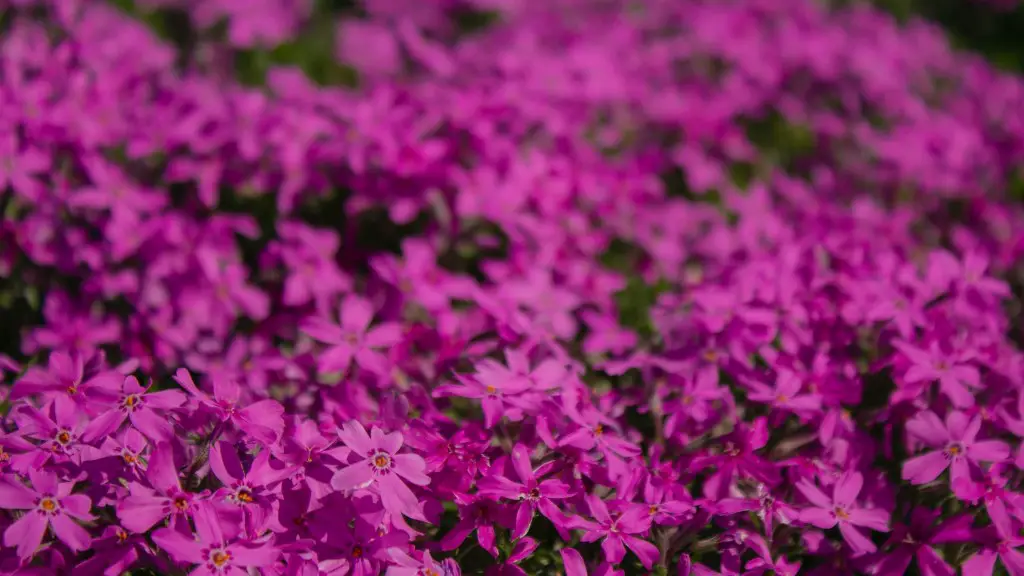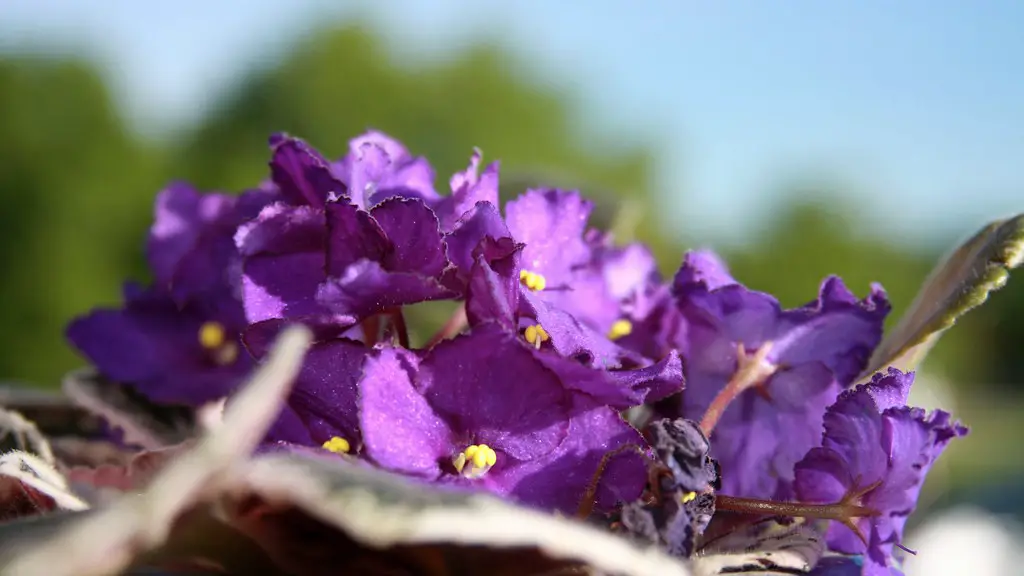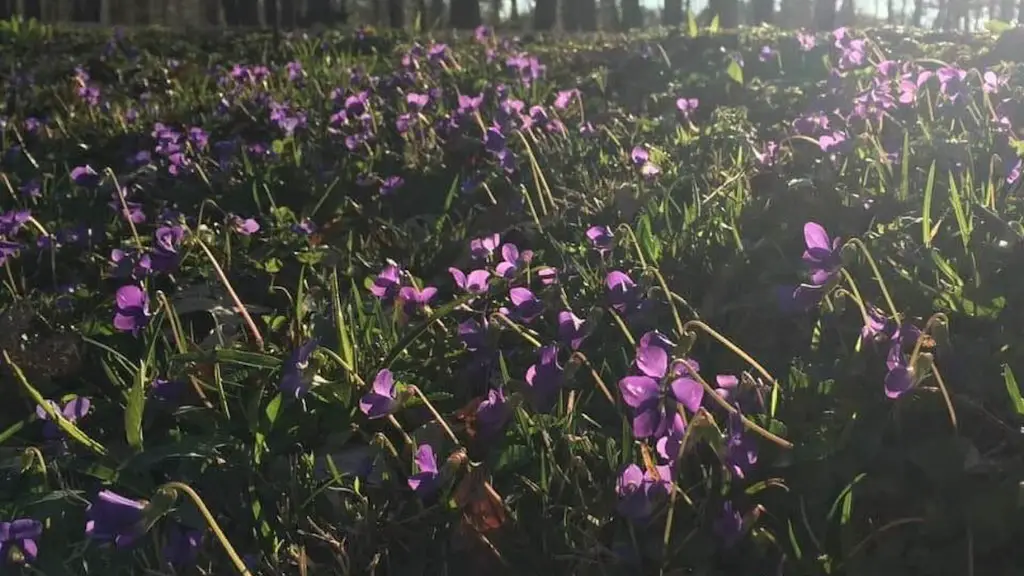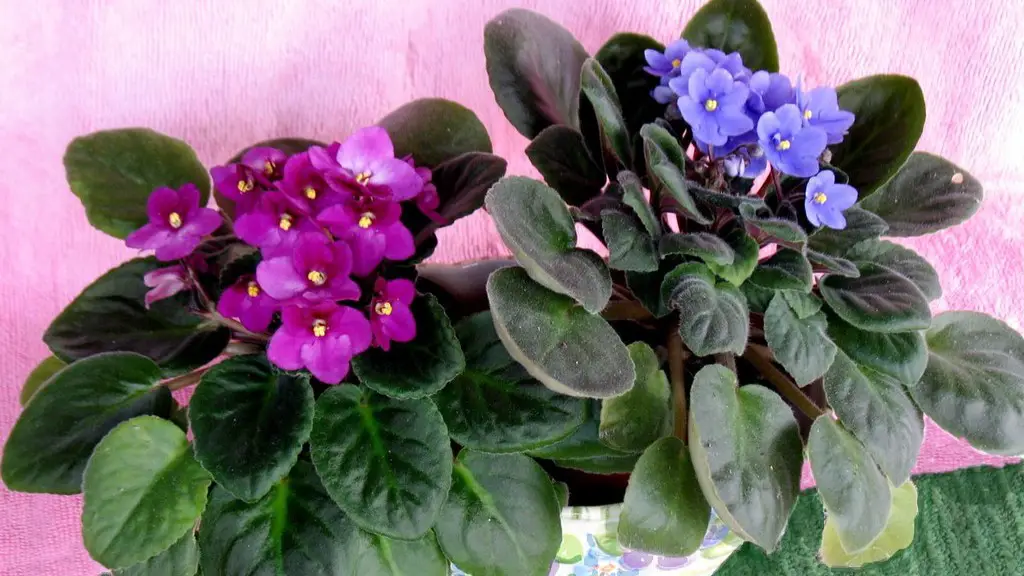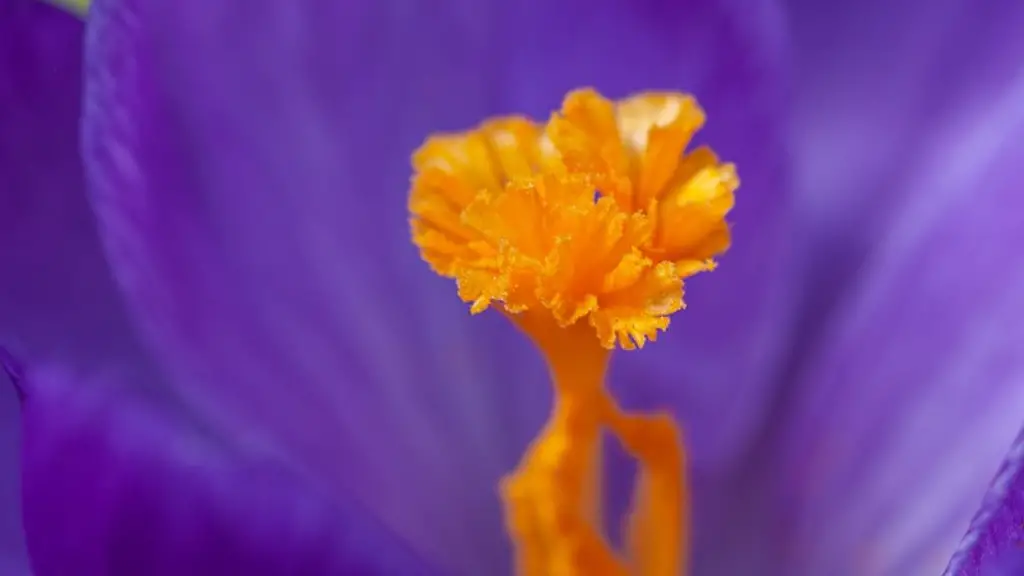Most types of African violets (Saintpaulia) prefer moderate to high humidity, with 40 to 50% relative humidity being ideal. They will tolerate lower humidity, but growth may be stunted, and the leaves may become dry and wrinkled. If the humidity is too high, the leaves may be covered with a fine mist of water droplets, which can encourage fungal diseases.
African violets like humidity.
Where is the best place to keep African violets?
African violets need bright, indirect light in order to thrive. A spot near an east or north window is often a good option, as it will provide the right amount of light without exposing the plant to direct sunlight, which can be harmful. If a suitable window isn’t available, African violets can also be placed under a fluorescent light fixture containing two 40-watt fluorescent tubes.
African violets are beautiful, flowering plants that are popular houseplants. They are relatively easy to care for, but there are a few things to keep in mind in order to keep them healthy and happy.
These plants like good drainage and a lot of organic matter in their soil. Be sure to use a potting mix that is light and airy, and add some perlite or other drainage material to the bottom of the pot. Water when the soil is dry, using room temperature water.
African violets prefer a humid environment, so consider placing a humidity tray (a pebble-lined tray filled with water) or a humidifier near the plant.
With a little care, your African violet will thrive and provide you with beautiful blooms for many years to come!
Do African violets like to stay moist
The African Violet is a delicate plant that needs to have its soil stay lightly moist at all times, just like it would in its natural habitat. However, the African Violet is also quite sensitive to overwatering, so don’t let the plant sit in wet soil. To prevent your plant from sitting in water, make sure to use a pot with drainage holes.
African violets are a type of plant that love humid air. This means that they thrive in rooms like kitchens or bathrooms where there is often more moisture in the air. If you provide them with enough humidity, they will grow quickly and flower for an extended period of time. One way to do this is to place a humidity tray underneath your African violets. This will help to create the moist environment they need to prosper.
Do African violets like bigger pots?
African violets do best when they are slightly pot-bound, so choose a pot that’s on the smaller side. A professional tip is to choose a starter pot that is about 3-4 inches in diameter for a standard African violet plant.
A wicking system is a great way to make sure your African violets are never over watered. The way it works is you place a wick in the bottom of the pot and then water the plant from the top. The water will then be drawn up through the wick and into the plant. This will ensure that the plant always has the correct amount of moisture and never sits in water.
Do African violets like misting?
African violets are susceptible to crown rot, so it is important that the crown (the section of the plant at soil level) is not saturated with water. Water on the foliage may cause permanent leaf spotting. Use water that is room temperature and DO NOT mist the foliage.
African violets need to be watered regularly, but allowed to dry out between each watering for best results. Overwatering can kill a plant, as the fine roots of an African violet need air, which cannot penetrate a soggy wet soil mass.
Are clay or plastic pots better for African violets
Terra cotta pots are ideal for African violets because the porous material allows the roots to breath better and prevents the soil from staying too wet. African Violet roots don’t go very deep; they like to go sideways, so don’t use a deep pot. Your pot must have suitable drainage holes so you can water from underneath.
If you are not seeing blooms on your African violet, it is likely due to a lack of light. These plants need indirect sunlight in order to thrive – direct sunlight can actually burn the leaves. Place your African violet in a north- or east- facing window for best results, and be sure to keep the plant away from any cold glass. rotate the pot once a week so all leaves receive light. With a little TLC, you should start to see blooms in no time!
What is the proper way to water African violets?
African violets are one of the many plants that prefer to be watered from the bottom up. By placing your plant in a shallow tray of water for 30 minutes, you’re allowing the soil to soak up the water it needs through the drainage holes at the bottom of the pot. This method is not only more efficient for the plant, but it also helps to prevent against root rot and other problems that can occur when the plant is overwatered.
If you have over-watered your African Violet plant, you will need to take corrective action to save the plant. The soil will retain too much water, causing the leaves and/or leaf stems to turn soft, limp or mushy. You will need to water less frequently, and allow the soil to dry out between waterings. If the plant is too far gone, you may need to repot it in fresh, dry soil.
Do African violets prefer plastic pots
african violets need a pot that has good drainage and is made of a light material. plastic pots are a good option because they are light and have good drainage. they are also available in a variety of sizes and colors.
If you want your African violets to thrive for many years to come, it is important to repot them every year or two. This will refresh the soil and give the roots room to grow. McEnaney recommends doing this in the spring, before the plant starts to bloom.
Can you spray water on African violets?
To clean African Violet leaves, fill a spray bottle with room temperature or tepid water and spray the leaves. Rub the top and bottom of the leaves with your fingers to clean them. You can also use the spray bottle method to clean the leaves with liquid soap.
If your African Violet becomes rootbound, it’s time to repot! When you’re repotting, make sure to choose a pot that is only one size bigger than the current pot. African Violets need well-draining soil, so be sure to use a potting mix that includes perlite or vermiculite. And finally, water your Violet thoroughly after repotting.
Warp Up
African violets like humidity because it helps them to retain water.
While different types of African violets have different watering needs, in general, they prefer humidity. African violets like to be kept moist, but not wet, and benefit from regular misting or setting the pot on a tray of pebbles and water.
